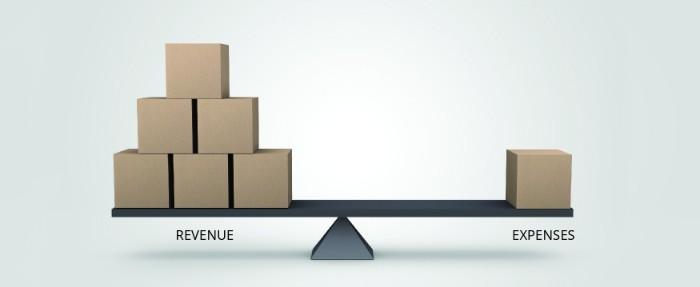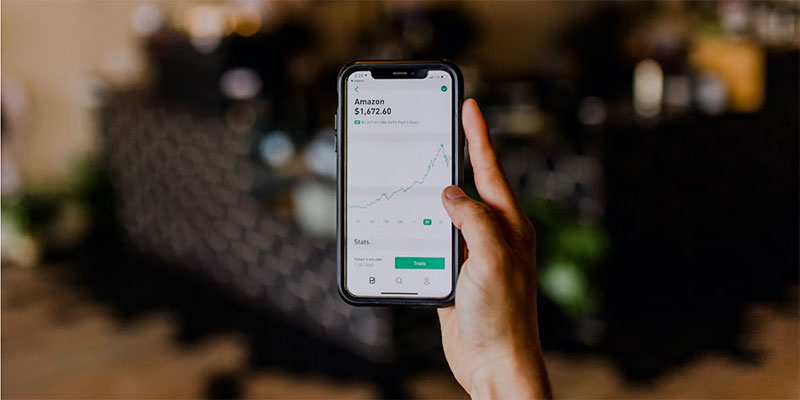What Is Cost-Volume-Profit (CVP) Analysis?
Oct 21, 2024 By Kelly Walker
Cost-Volume-Profit (CVP) analysis is a financial accounting system businesses, and entrepreneurs use to assess the costs associated with producing goods or services and determine how those costs will influence their profits.
By using this system, companies can accurately determine the breakeven point for their business to know where they will start seeing a return on their investments. CVP analysis, therefore, plays an important role in boosting revenue and ensuring profitability.
In this blog post, we'll review everything you need about CVP analysis - from its basic principles to useful tips for utilizing it in your venture. Let's get started.
Introducing Cost-Volume-Profit (CVP) Analysis
Cost-Volume-Profit (CVP) Analysis is a useful tool for management to understand how changes in costs, sales volume, and prices affect the profits of a business. By using CVP analysis, a company can determine what level of sales revenue is necessary to break even or make a profit.
This type of analysis helps management identify the most profitable course of action and also helps them to decide how much to spend on marketing, product pricing, production costs, and other expenses.
CVP analysis examines the relationships between a company's total revenue, total costs, fixed costs, and variable costs. The main concept behind CVP analysis is that the sales volume must be sufficient to cover both the fixed and variable business costs. If the sales volume is sufficient, then profits are possible regardless of whether or not prices are increased.
CVP analysis also takes into account the fact that companies have different levels of operating leverage. Operating leverage refers to how much of a company's revenue is used for fixed costs such as rent, utilities, and other overhead expenses. Companies with high operating leverage will have a greater impact from changes in sales volume than companies with low operating leverage.
CVP analysis is an effective tool for management to make more informed decisions regarding their profits. By identifying the variables affecting profitability and understanding how they interact, businesses can make better decisions about their pricing, production costs, and spending.
How CVP Analysis is Used to Evaluate Business Performance

CVP analysis is used to evaluate the performance of a business by analyzing the impact of sales volume, variable costs, and fixed costs on profits. It helps businesses understand how different variables interact and determine their breakeven point. This allows them to set profitable prices for the company while still being competitive.
By looking at the data generated from CVP analysis, companies can identify areas where they are overspending and make adjustments accordingly. They can also determine whether or not their current prices are profitable and if changes need to be made.
CVP analysis is also useful for forecasting future profits. By looking at previous performance and adjusting for anticipated changes in costs, sales volume, and prices, companies can make better decisions about allocating their resources.
Finally, CVP analysis helps businesses identify areas where they could increase profits. By analyzing the data generated from the analysis, businesses can see what changes need to be made to optimize their business for maximum profitability.
Components of a CVP Analysis
The components of CVP analysis are sales volume, variable costs, and fixed costs.
- Sales Volume: Sales volume is the total number of units sold or services rendered during a certain period. It is one of the most important factors in determining profitability.
- Variable Costs: Variable costs are expenses that vary in proportion to sales volume. Examples of variable costs include raw materials, labor, and commissions.
- Fixed Costs: Fixed costs remain constant regardless of the sales volume level. These include rent, utilities, insurance, and other overhead expenses.
By analyzing these three components and their relationships to each other, companies can make more informed decisions about pricing, production costs, and spending. CVP analysis helps them ensure that their business is as profitable as possible.
Benefits of using CVP Analysis to Make Strategic Decisions
CVP analysis is a useful tool for businesses to evaluate their company's performance and make more strategic decisions. By understanding how different variables interact and determining their breakeven point, businesses can set profitable prices while still being competitive.
They can also identify areas where they could increase profits.
CVP analysis helps businesses make more informed decisions about their pricing, production costs, and spending. By utilizing this tool, companies can ensure that they are optimizing their business for maximum profitability.
This is especially useful in today’s competitive marketplace, where making the right decisions has never been more important. CVP analysis allows businesses to understand their costs and identify potential areas for improvement, allowing them to remain competitive and increase their profits.
Analyzing Breakeven Point with the Help of CVP Analysis
The main goal of CVP analysis is to identify the breakeven point for a business. The breakeven point is the sales volume level that will cover all operating costs and allow a company to profit. This can be calculated by subtracting total fixed costs from total variable costs, then dividing that by the unit contribution margin.
Once a company knows its breakeven point, it can make better decisions about pricing and production costs to ensure that its business is profitable. CVP analysis is also useful for forecasting future profits, as it allows companies to adjust for anticipated changes in costs, sales volume, and prices.
FAQs
What is the cost volume profit CVP analysis?
CVP analysis is an analytical tool used to determine the break-even point of a business. It involves analyzing the relationship between sales volume, variable costs, and fixed costs to determine a company's most profitable pricing strategy.
What are the components of CVP analysis?
The components of CVP analysis are sales volume, variable costs, and fixed costs.
What are the benefits of using CVP analysis?
The main benefit of CVP analysis is that it allows businesses to make more informed decisions about pricing, production costs, and spending. By understanding how different variables interact and determining their breakeven point, businesses can set profitable prices while still being competitive.
Conclusion:
Having made it through this blog post, you now understand the basics, implementation, and tips for Cost-Volume-Profit (CVP) Analysis. CVP analysis is a powerful tool enabling business professionals to gain insight into their firm's operations. With just a few calculations, CVP gives you the information needed to make sound decisions when managing stocks or developing price strategies.

Essential Guide to Understanding Deposit Slips

Unveiling the Features: A Comprehensive Review of Merrick Bank Secured Visa

Form 1099-DIV, Dividends and Distributions Definition

What Is an IPO Lock-Up?

How Much Will I Get From Social Security

Trinity Debt Management Review

Most Famous Leveraged Buyouts

How a High P/B Ratio Correlates to High ROE

Cash Flow Maximisation

